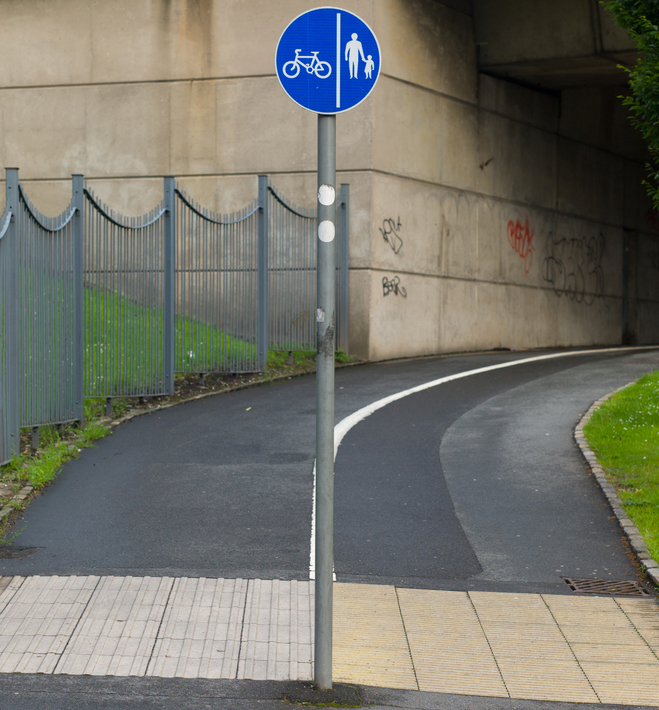The Government has published two key documents that aim to improve disabled people’s mobility and safety while travelling.
Inclusive Mobility: A Guide to Best Practice on Access to Pedestrian and Transport Infrastructure supersedes the original Inclusive Mobility guidance document first published by the Department for Transport (DfT) in 2002 but does not change the principles underpinning it.
The DfT has also published Guidance on the Use of Tactile Paving Surfaces, which covers both streetscapes and railway platforms.
The Inclusive Mobility guidance is for use by anyone designing and installing public realm schemes and improvements and applies to both new build schemes and upgrades to existing layouts.
It notes that although its main purpose of this guidance is to provide good access for disabled people, ‘designs that satisfy their requirements also meet the needs of many other people’.
The document provides guidance on footways, footpaths and pedestrian crossing facilities, including changes in level and tactile paving surfaces; making cycling infrastructure accessible; car parking; bus, light rapid transit and tram stops, taxi ranks and transport buildings; technology; signing and information; lighting and access to the countryside.
It advises that on shared use routes, i.e. where all or part of the footway has been converted to a cycle track, mixing pedestrians and cyclists should be avoided as far as possible, in order to reduce the potential for collisions or conflict.
Local Transport Note 1/20 ‘is clear that shared use routes in streets with high pedestrian or cyclist flows should not be used’.

The guidance advises that a painted white line is not adequate as a central delineator strip on a shared use route
The Guidance on the Use of Tactile Paving Surfaces supersedes the Guidance on the Use of Tactile Paving Surfaces published in 1998 but again does not alter the principles set out in the original document.
It points out that tactile paving surfaces convey vital information to the vision impaired and other people about their environment, ‘including hazard warning and directional guidance, thereby supporting independent mobility’.
The document notes that the research behind the original guidance involved people with a wide range of other impairments. This research identified the negative effects of tactile paving on the experience of wheelchair users and people with walking difficulties. The guidance highlights the general desirability of minimising the amount of tactile paving used.
It describes six types of tactile paving surface:
- Blister Surface for Pedestrian Crossing Points
- Corduroy Hazard Warning Surface
- Platform Edge (On-Street) Warning Surface
- Segregated Shared Cycle Track/Footway Surface and Central Delineator Strip (Ladder and Tramline)
- Guidance Path Surface
- Platform Edge (Off-Street) Warning Surface (only for use at the edge of railway and underground station platforms)
The section on Platform edge (off street) warning surface recommends that it is used at all off-street railway platforms.
In February 2021, following a fatality at a rail station a year earlier, the chief inspector of rail accidents noted that only half of mainline stations in the UK were equipped with tactile strips along the platform edge.
The chief inspector added that although government and the railway industry have policies to make rail travel more accessible for people with disabilities, ‘there appears to have been no coherent strategy for the provision of tactile strips, despite their obvious importance to visually impaired people’.
Register now for full access
Register just once to get unrestricted, real-time coverage of the issues and challenges facing UK transport and highways engineers.
Full website content includes the latest news, exclusive commentary from leading industry figures and detailed topical analysis of the highways, transportation, environment and place-shaping sectors.
Use the link below to register your details for full, free access.
Already a registered? Login